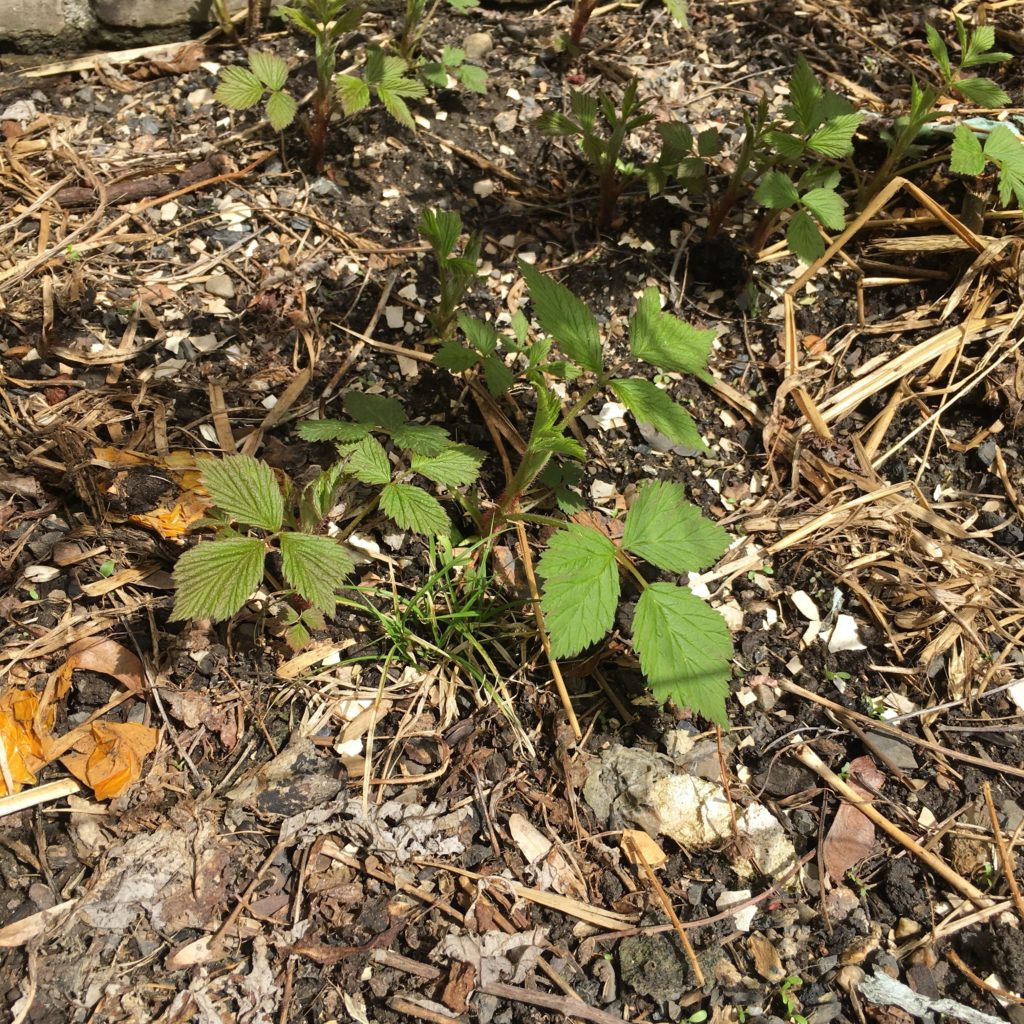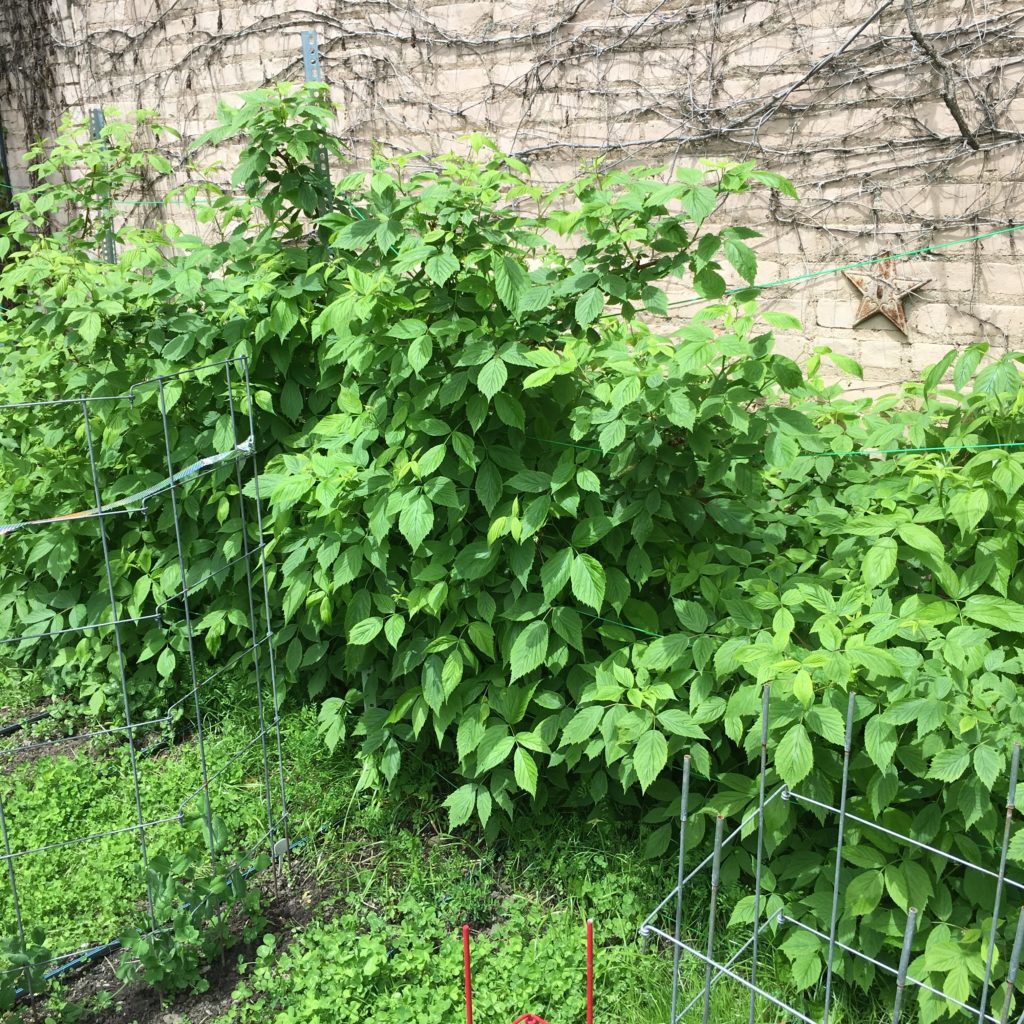
As always in spring, so much has changed in my backyard vegetable garden over the last month (see April’s update here, if only to see what the garden looked like only last month). It’s stayed fairly cool for this time of year and we’ve been getting a lot of rain: 3.5” in my garden rain gauge over the last two weeks and more in the forecast for overnight.
Despite the cool and the grey, spring has worked its magic again. I am always astounded that you can plant one tiny seed and it produces pounds of food. The fact that it pays off in tomato sandwiches and pesto is an extra bonus.
Early seeds went in the ground at the end of April and are starting to get going: radishes, beets, turnips, mesclun, mâche (or corn salad), and peas. Seeds for cool-weather plants started inside under my grow lights were transplanted after getting hardened off on my back porch, getting used to outside temperatures and breezes: red leaf and romaine lettuce, arugula, and nasturtiums. I also set up my drip watering system, re-orienting it from last year at a friend’s suggestion.
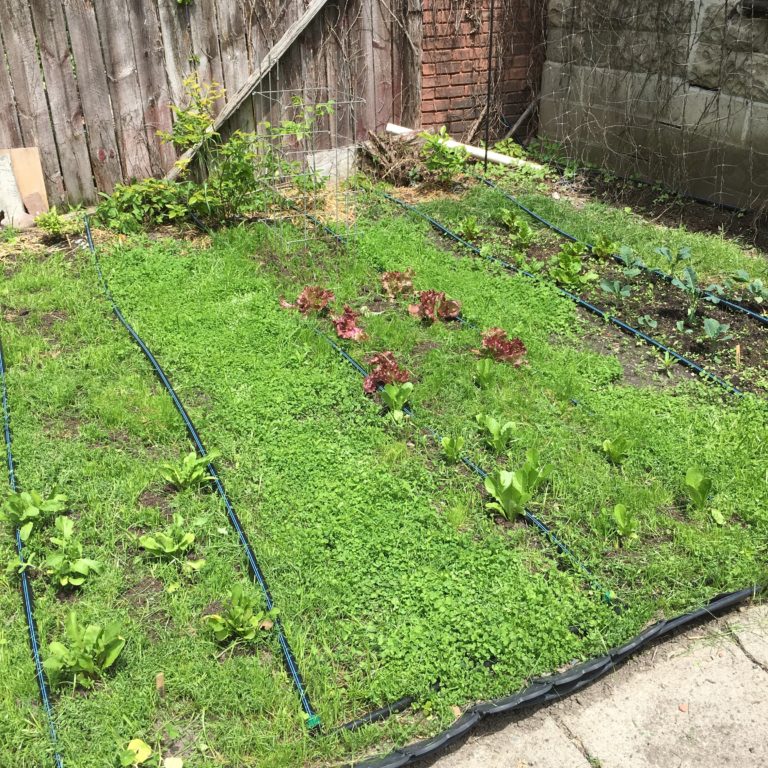

Lavender received spring pruning, cutting away all that was winter-killed, and it’s already plumping up with new growth.


Cover crops/green manure well-established. I usually get the vegetable plants in first, let them get going, then undersow vetch and rye grass. This year I did the reverse because the weeds were particularly pernicious. There is some competition for water and nutrients between the vegetable plants and the cover crops, but I’m convinced that their addition has gone a long way to correcting the soil health. I keep the green manure pretty well clipped, and let the clippings fall where they will, adding biomass to the soil. In the winter, the roots keep the topsoil in place. They also prevent weeds from taking hold and can smother out ones already established. On the paths between beds I plant clover. It fixes nitrogen in the soil, the bees love the flowers, and it tolerates foot traffic very well.
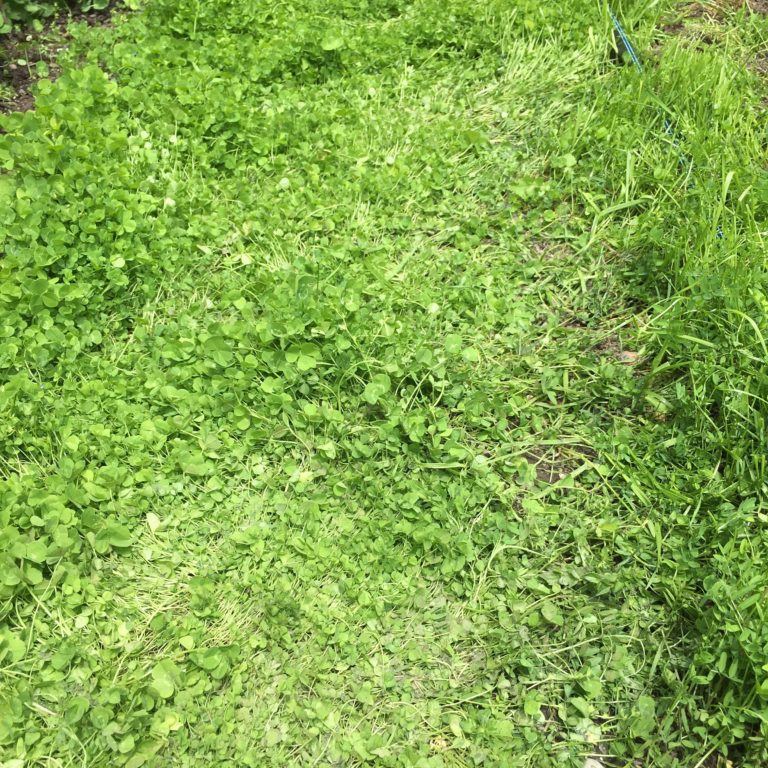
Tomatoes went in the ground today. I usually I use what I refer to as my Devo hats to keep them warm (see last year’s blog post) but they’re going in a bit later than usual and have also been meeting the elements bit by bit on my back porch and are acclimated. I am gratified that they are robust and as large as many of the seedlings I see for sale, so I must have hit on the right time to start the seeds. I don’t mind them getting a little leggy and floppy while growing inside, despite blowing a fan on them to strengthen their stems.


I plant them sideways, by digging a trench and burying part of the stem. Roots will develop along the stem, making for a sturdy foundation. I sacrifice only a little time as the plants are still mature, just shorter. It only takes a little growth before the plants are headed straight up towards the sun again. I don’t know where I read about doing it that way but it made a lot of sense to me and do it every year. As soon as they go into the ground, I put the first section of my wonderful tomato supports from Gardeners Supply up, which is the red cage you can see in the photos. They have a second section that sits on top to really support the plant and the weight of the tomatoes. They certainly don’t need it when first planted but I fear damaging roots if I put them in after they’ve gotten established.

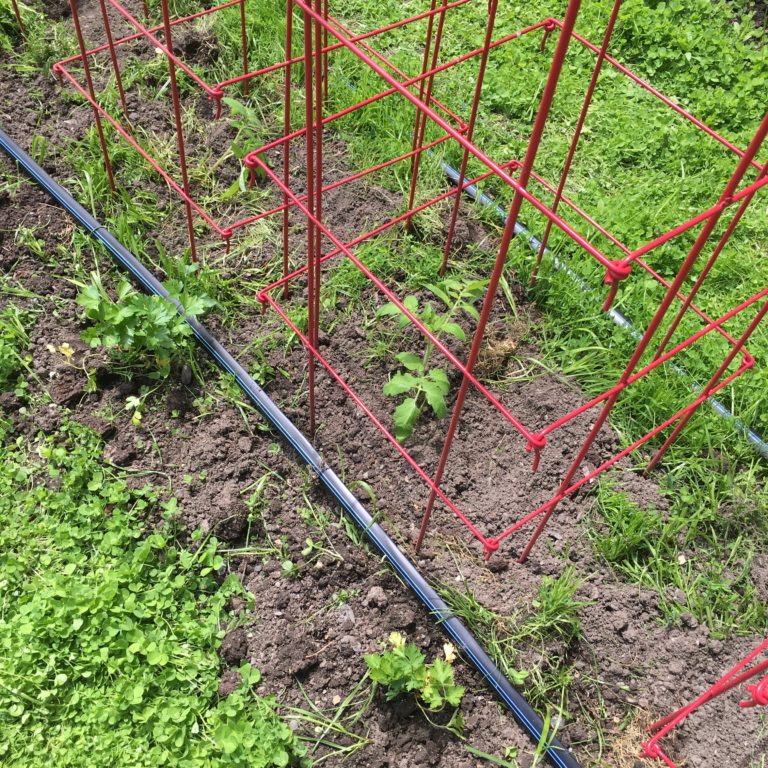
Still hardening off Hungarian wax peppers, basil, cucumbers, and zucchini. Those will probably go in the ground next weekend. The basil and peppers are just mature enough for me to make my first prune. I’ve learned to be hard-hearted about it, although it’s hard to cut them back. For both plants, making a snip as they’re starting to mature (flower buds showing up on the peppers, new leaf nodes appearing on the basil) makes them branch at the snip. As those branches grow out a little bit, another prune makes those branch, and so on. I can only do so many for the peppers, as they do need to flower in order to grow peppers and the growing season is so short. For the basil, I do it regularly throughout the season and make pesto base to freeze if I can’t keep up with the fresh leaves; you also don’t want the basil to flower or that will pretty much be the end of production. They always look a bit forlorn when first pruned but the plants produce so much more if you do.
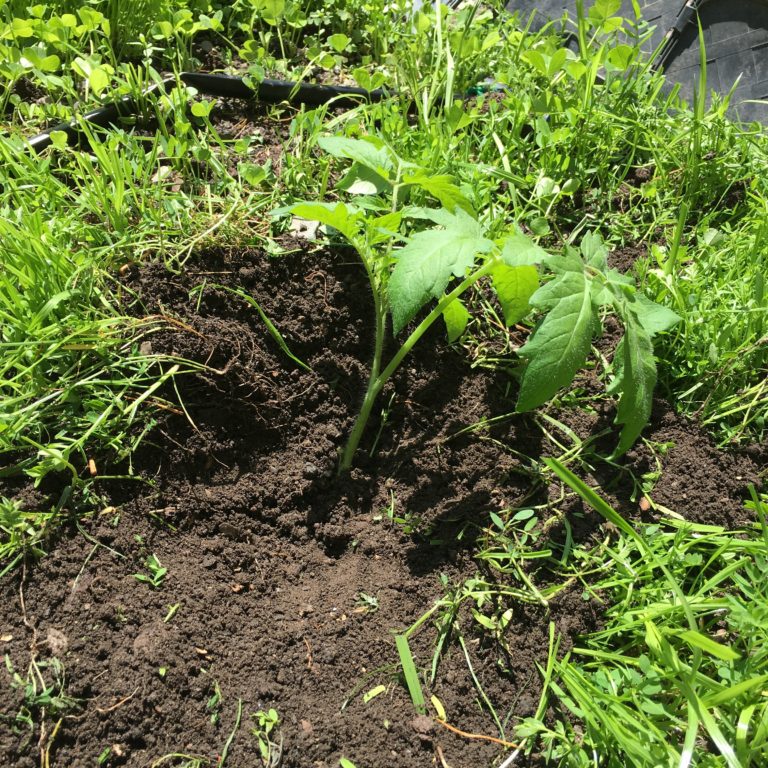
Eggplant, parsley, and cilantro also went in the ground today, as well as seeds for scallions and another round of radishes.
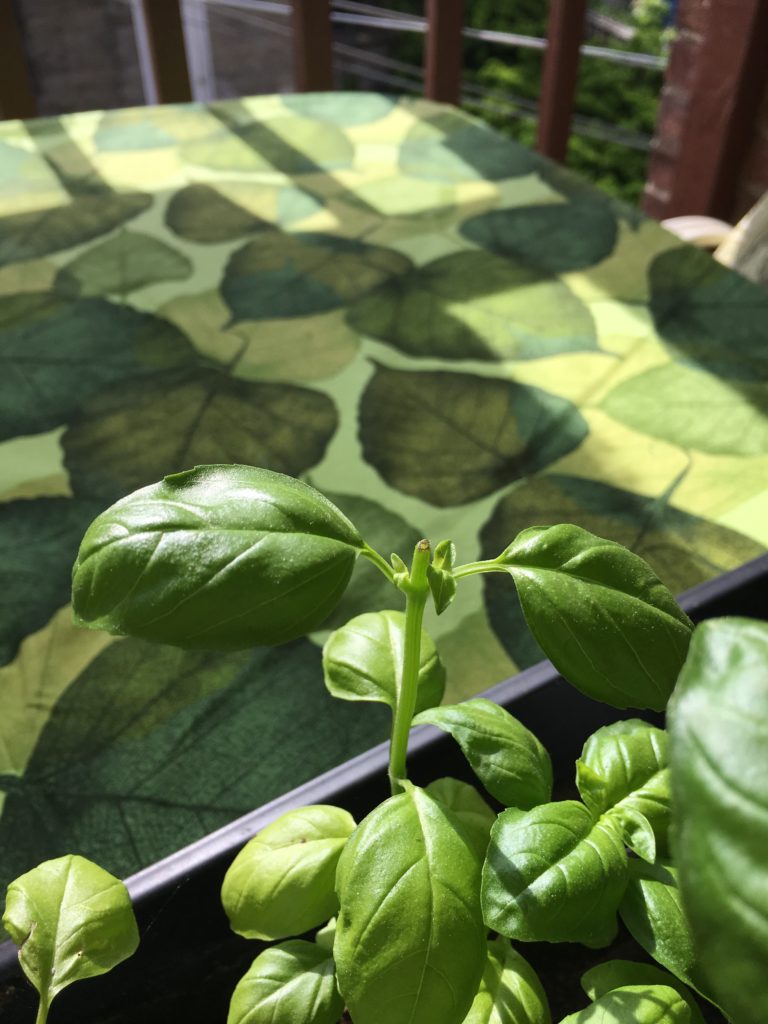
Peas are climbing but no flowers yet. Salad greens aren’t quite big enough to harvest. Flower buds just showing on the raspberries. Chives are in bloom and it’s time to make chive blossom vinegar (see an easy how-to post from last year), although they’re the only thing on offer to the bees in the garden, which makes me feel conflicted. Things should be really taking off over the next few weeks. I can’t wait!

